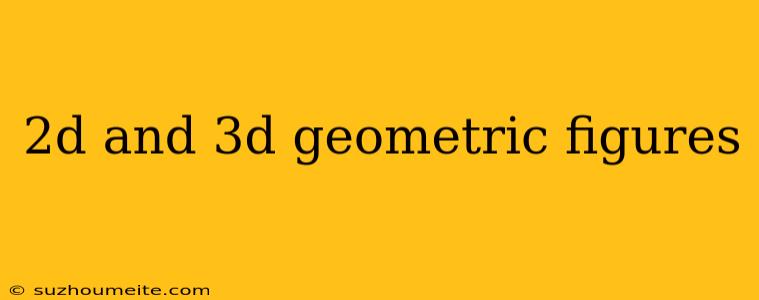2D and 3D Geometric Figures
Introduction
Geometric figures are an essential part of mathematics, used to describe shapes and structures in various fields such as architecture, engineering, art, and design. There are two main categories of geometric figures: 2D (two-dimensional) and 3D (three-dimensional). In this article, we will explore the characteristics, types, and real-life applications of 2D and 3D geometric figures.
2D Geometric Figures
Definition
2D geometric figures are shapes that exist in a two-dimensional space, having only length and width. They can be drawn on a flat surface like a piece of paper.
Types of 2D Geometric Figures
Points
- A point has no size, only location.
- Represented by a single coordinate (x, y).
Lines
- A set of points extending infinitely in two directions.
- Can be straight or curved.
Line Segments
- A part of a line with a definite length.
- Has a starting point and an ending point.
Rays
- A line with a starting point, extending infinitely in one direction.
Angles
- Formed by two rays sharing a common endpoint.
- Measured in degrees.
Triangles
- A polygon with three sides and three angles.
- Equilateral, isosceles, and scalene are types of triangles.
Quadrilaterals
- A polygon with four sides and four angles.
- Rectangles, squares, rhombi, and trapezoids are types of quadrilaterals.
Polygons
- A closed shape with three or more sides.
- Can be regular or irregular.
Circles
- A set of points equidistant from a central point (center).
- Has a constant radius.
3D Geometric Figures
Definition
3D geometric figures are shapes that exist in a three-dimensional space, having length, width, and height. They occupy space and can be touched and felt.
Types of 3D Geometric Figures
Solids
- A three-dimensional shape with volume.
- Can be regular or irregular.
Prisms
- A solid with two identical faces that are parallel.
- Rectangular, triangular, and hexagonal prisms are examples.
Pyramids
- A solid with a single base and multiple triangular faces.
- Rectangular, triangular, and square pyramids are examples.
Spheres
- A set of points equidistant from a central point (center).
- Has a constant radius.
Cylinders
- A solid with two parallel and circular bases connected by a curved surface.
- Has a constant radius.
Cones
- A solid with a circular base and a curved surface that tapers to a point.
- Has a constant radius.
Real-Life Applications
- Architecture: 2D and 3D geometric figures are used to design buildings, bridges, and other structures.
- Engineering: Geometric figures are used to calculate stress, strain, and other physical properties of materials.
- Art and Design: Geometric shapes are used to create visual compositions, patterns, and designs.
- Science: Geometric figures are used to describe the shape and structure of molecules, cells, and other natural forms.
Conclusion
In conclusion, 2D and 3D geometric figures are fundamental concepts in mathematics, with a wide range of applications in various fields. Understanding these concepts is essential for problem-solving, critical thinking, and creativity.
